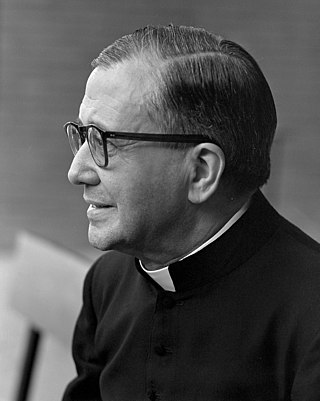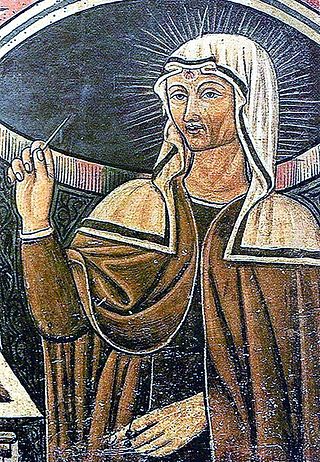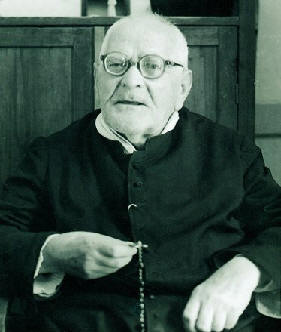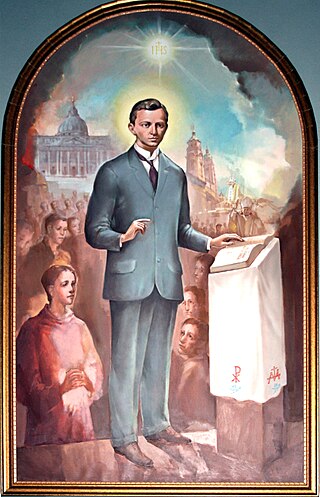
Canonization is the declaration of a deceased person as an officially recognized saint, specifically, the official act of a Christian communion declaring a person worthy of public veneration and entering their name in the canon catalogue of saints, or authorized list of that communion's recognized saints.

In Christian belief, a saint is a person who is recognized as having an exceptional degree of holiness, likeness, or closeness to God. However, the use of the term saint depends on the context and denomination. In Anglican, Oriental Orthodox, and Lutheran doctrine, all of their faithful deceased in Heaven are considered to be saints, but a selected few are considered worthy of greater honor or emulation. Official ecclesiastical recognition, and veneration, is conferred on some denominational saints through the process of canonization in the Catholic Church or glorification in the Eastern Orthodox Church after their approval. In many Protestant denominations saint refers broadly to any holy Christian, without special recognition or selection.

Andrew Bobola, SJ was a Polish missionary and martyr of the Society of Jesus, known as the Apostle of Lithuania and the "hunter of souls". He was beaten and tortured to death during the Khmelnytsky Uprising. He was canonized in 1938 by Pope Pius XI.

Josemaría Escrivá de Balaguer y Albás was a Spanish Catholic priest who founded Opus Dei, an organization of laypeople and priests dedicated to the principle of everyday holiness. He was canonized in 2002 by Pope John Paul II, who declared Josemaría should be "counted among the great witnesses of Christianity."

Rita of Cascia, OSA, was an Italian widow and Augustinian nun. After Rita's husband died, she joined a small community of nuns, who later became Augustinians, where she was known both for practicing mortification of the flesh and for the efficacy of her prayers. Various miracles are attributed to her intercession, and she is often portrayed with a bleeding wound on her forehead, which is understood to indicate a partial stigmata.

Lorenzo Ruiz, also called Saint Lorenzo of Manila, was a Filipino Catholic layman and a member of the Third Order of Saint Dominic. A Chinese Filipino, he became his country's protomartyr after his execution in Japan by the Tokugawa shogunate during its persecution of Japanese Christians in the 17th century. Lorenzo Ruiz is the patron saint of, among others, the Philippines and the Filipino people.

The Servite Order, officially known as the Order of Servants of Mary, is one of the five original mendicant orders in the Roman Catholic Church. It includes several branches of friars, contemplative nuns, a congregation of religious sisters, and lay groups. The order's objectives are the sanctification of its members, the preaching of the Gospel, and the propagation of devotion to the Mother of God, with special reference to her sorrows. The Servites friars lead a community life in the tradition of the mendicant orders.

The Passionists, officially named the Congregation of the Passion of Jesus Christ, abbreviated CP, are a Catholic clerical religious congregation of pontifical right for men, founded by Paul of the Cross in 1720, with a special emphasis on and devotion to the Passion of Jesus Christ. A known symbol of the congregation is the labeled emblem of the Sacred Heart of Jesus, surmounted by a cross. This symbol is often sewn into the attire of its congregants.

Pedro Calungsod, also known as Peter Calungsod and Pedro Calonsor, was a Catholic Filipino-Visayan migrant, sacristan and missionary catechist who, along with the Spanish Jesuit missionary Diego Luis de San Vitores, suffered religious persecution and martyrdom in Guam for their missionary work in 1672.
The canonization of Josemaría Escrivá, a Spanish Catholic priest and the founder of Opus Dei, took place on October 6, 2002, by Pope John Paul II in St. Peter's Square, Vatican City..

Gaetano Catanoso was an Italian Catholic priest and the founder of the Suore Veroniche del Santo Volto (1934). Catanoso served as a parish priest in two different parishes for his entire ecclesial life and was an ardent devotee of the Face of Jesus which he promoted to the faithful. He also founded the Poor Clerics to encourage vocations to the priesthood while forming the Confraternita del Santo Volto (1920) to spread devotion to the Face of Jesus. He dedicated his pastoral career to bringing the Gospel message to all people and hiked or rode on a mule to reach distant and surrounding mountain villages in order to evangelize to people.

Ivan Merz was a Catholic layman from Bosnia and important supporter of the Catholic Church in Croatia. Merz promoted the Liturgical Movement in Croatia and together with Ivo Protulipac, he established a movement for the young people, Hrvatski orlovski savez, inspired by the Eucharistic Crusade, which he had encountered in France. He was beatified by Pope John Paul II in 2003.

José María de Yermo y Parres was a Mexican Roman Catholic priest and the founder of the Servants of the Sacred Heart of Jesus and of the Poor. He dedicated his life to catering to the needs of the abandoned and used his order to take care of the poor's spiritual and material needs. He also was once a vowed member of the Congregation of the Mission due to his devotion to Saint Vincent de Paul but left it after experiencing a sudden vocational crisis.

The Society of the Holy Name, formally known as the Confraternity of the Most Holy Name of God and Jesus, is a Roman Catholic confraternity of the laity and is one of several which are under the care of the Dominican Order. It is open to all Catholic adults. The primary object of the society is to beget reverence for the Holy Name of God and Jesus Christ; it is also dedicated to making reparations, in particular, for blasphemy, perjury and immorality.

Alfonso Maria Fusco was a Roman Catholic priest and the founder of the Sisters of Saint John the Baptist – also known as the Baptistine Sisters. Their mission was to evangelize and educate as well as to promote the faith amongst adolescents with a particular emphasis on those who were poor or abandoned.

Maria Domenica Mantovani was an Italian Roman Catholic professed religious, and the co-founder of the Little Sisters of the Holy Family; she established them alongside Giuseppe Nascimbeni. As a nun she received the religious name of Maria of the Immaculate.

The Martyrs of Natal were a group of 30 Roman Catholic people of Colonial Brazil – two of them priests – killed in the northern part of the colony in massacres that a large group of Dutch Calvinists led. One priest was a Colonial Brazilian Jesuit missionary, while the other priest was an evangelizer himself. The others were all lay Catholics, most of them anonymous members of the Church, some of them children.

Brynolf Algotsson was a Swedish Catholic prelate and theologian who served as the Bishop of Skara from 1278 until his death. He was descended from nobles and studied for almost two decades in Paris at the college there before returning to his homeland as a dean and canon prior to his episcopal nomination. He was diligent in his work in reforming the education of schools and the overall reorganization of his episcopal see. He was forced into a brief exile but was able to continue his work upon his return.

The Basilica of Santa Rita da Cascia is a 20th-century Roman Catholic minor basilica church, sanctuary, and convent located in the town of Cascia, province of Perugia, region of Umbria, Italy.


















